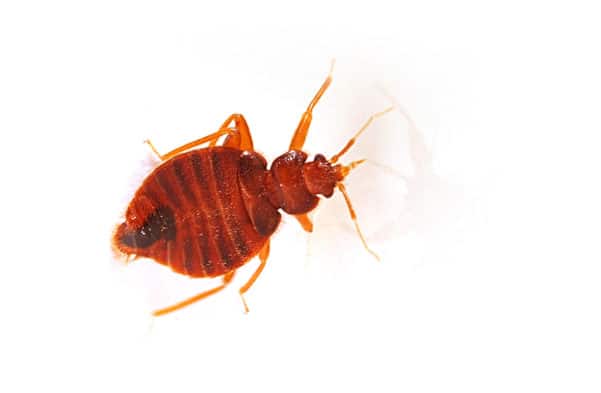Bed bugs are one of the most difficult pests to get rid of. Early detection is critical for bed bug control. A minor infestation can be an inconvenience but it is much less expensive and easier to treat than a widespread infestation. Minor infestations can be difficult to find and correctly diagnose, however. Other insects like carpet beetles are often mistaken for bed bugs. Misidentification or delay in detection can allow the bed bugs more time to spread and proliferate. How do you find bed bugs? Where can bed bugs hide?
Identification
The first step in finding bed bugs is properly identifying them. Adult bed bugs are brown or reddish-brown with flat, oval-shaped bodies that are about 1/4″ to 5/8″ long. Their flat body shape allows them to hide in cracks and crevices. Bed bugs become swollen and engorged after feeding. They are found throughout the United States.
Habits
Learning and understanding the habits and behavior of bed bugs can also help identify an infestation early. Bed bugs like to travel and are notoriously good hitchhikers. Bed bugs usually emerge at night in search of their blood meal but will feed during the day if necessary. While bed bugs are most commonly known for feeding on humans, they will also feed on other mammals and birds too. They usually hide near their food source.
Signs
Knowing and recognizing the signs of a bed bug infestation is key to identifying them early and getting rid of them quickly. Some common signs of bed bugs include:
- Rust or red-colored stains on sheets and mattresses (this is caused by the bed bugs being crushed)
- Dark spots about the size of a period (.) (these are bed bug feces)
- Tiny eggs or eggshells shed by growing bed bug nymphs
- Live bed bugs
- Bites on areas of the skin that are exposed during sleep
Inspection
Once you know the signs to look for, the next step is to thoroughly inspect any areas that could potentially harbor bed bugs. Bed bugs are found in every place humans gather including homes, hotels, schools, offices, stores, and public transportation. They like to use their flat shape to hide in cracks and crevices close to humans. They can fit in any opening the width of a credit card. When checking for bed bugs, use a flashlight and magnifying glass to thoroughly check the following areas:
- In the seams of chairs and couches and in between cushions
- In the folds of curtains
- In drawer joints
- In electrical outlets and appliances
- Under loose wallpaper and behind wall hangings
- At the junction of walls and ceilings
- In the heads of screws
- On mattresses and box springs, especially along seams and edges
- Along the bed frame
- In cracks in plaster and wallpaper seams
- In luggage or boxes stored in infested rooms
- In objects on nightstands including clocks and magazines or books
- In crevices of smoke detectors and phones
- In door hinges and window and door moldings
Prevention
Bed bugs can be extremely difficult to get rid of. If you spot signs of a bed bug infestation, contact a licensed pest control company who can positively identify the bed bugs and use professional grade techniques and products to eliminate the infestation. In the meantime, there are some things you can do to help prevent bed bugs in the first place.
- Reduce clutter in your home.
- Vacuum suitcases when returning from a trip.
- Routinely check linens and mattresses for signs of bed bugs.
- Make sure to also regularly check areas where your pets sleep for signs of bed bugs.
- Bring a large trash bag to store your suitcase in during travel.
- Bring a small flashlight and magnifying glass with you when traveling to help inspect your accommodations.
- Thoroughly inspect any used furniture before bringing them into your home.
- Check the Bed Bug Registry for your travel accommodations to see if they have any recent reports of bed bugs.
- Immediately wash your clothes in hot water and dry them on high heat after returning from travel.
You May Also Be Interested In:
How Dangerous Are Cockroaches?
How Long Does A Mosquito Treatment Last?
5 Ways to Get Rid of Millipedes

